The game Guardians of Ember offers classic hack-and-slash ARPG gameplay while expanding the experience with the unconventional option of developing a home base, along with an out-of-the-ordinary approach to the quest system.
Character Creation
Just like always, you start by selecting a race, gender, and class for your alter-ego before they let you loose in the game world to start hacking down anything that crosses your path. You can choose to play as a Human, an Elf, a Neia, or a Dwarf, though the Dwarves in this game might not be what you’re familiar with, looking as they do more like ogres. They’re as wide across as like, three human males, but hey, I guess that’s just how Dwarves are in the world of Ember.If you choose to play as a Human or an Elf, you have the further option of picking your character’s sex, but not so if you play as a Dwarf or Neia – Neia are always female, and Dwarves are always male. Classes to choose from include Knight, Arcanist, Ranger, Engineer, and Priest. Once you’ve got all that down, all that’s left to do is give your character a name.
I was randomly assigned the Engineer class, a choice I gladly accepted, and I was not disappointed, either. At least at this test stage, the Engineer’s unique abilities are pretty interesting, and seeing how other players are getting along, my class seemed easier to play than say, the Knight or the Arcanist. To me at least, it seemed that the only class whose abilities could compare to the Engineer’s – or even surpass them – was the Priest. I didn’t have enough time to check it out myself, though, so I don’t know if the class is that much better or if the Priest player I ran across was just better than I was. I also let the game pick my race randomly, and I got a Neia, a little fairy-like creature. So, there I was, a cute little white-haired damsel in a white dress with a big gun slung across my shoulder, just skipping along to a world of adventures.
Oh, and a word to those of you who really get into designing your character’s appearance – Guardians of Ember offers a ton of possibilities, to the point where character customization is practically another game inside the game. A sweet-looking little fairy girl like the one they gave me can be made into a sexy vixen or a harpy whose unsettling visage is more likely to scare the boys away than anything else. The same goes for the Dwarf – his rather beastly default appearance can be tweaked into a noble warrior or a wise sage. Basically, you can make your alter-ego look any way you please. And for people who really get into this kind of thing, you can even create costumes that always remain visible, even when you change weapons and armor.
The Game World
Guardians of Ember operates from a third-person fixed-camera “isometric” perspective, the classic visual set-up of the ARPG genre. The landscape is mostly smooth and level, with vertical elements like trees, walls, and towers that create the illusion of a 3D environment. These fade in and out as needed, so as not to impede the view. Obstacles like carts and fences that you might come across in the game world are mostly scenery and not really in-game objects, meaning you’re just going to have to find a way around them, since they’re impossible to destroy in most cases.Overall, there are very few destructible elements in Guardians of Ember – mostly just different kinds of boxes, chests, barrels, and pots. If you hover over one of these with the mouse and it stands out though, you should probably try to break it, since it might well contain some useful items. As for the rest, though, it’s completely indestructible - you could set off nukes all over the place and it wouldn’t venue make a dent.
As for the interface itself, the most vital information can be found at the bottom of the screen in the middle, where you’ll find two orbs and a series of ten boxes. The orb to the left filled with a red liquid represents your character’s Health, and the gold-colored one on the right represents their Energy. The boxes are slots for weapons and abilities. The bottom right corner of the screen contains a mini-map displaying your position within a small portion of the game map. There are a few other useful-looking icons scattered around the screen, but at this early stage of development they aren’t usable yet. There’s also an option to play in full-screen mode, which removes any clutter that might otherwise be distracting.
Controls
No surprises here – the controls are pretty standard, just what you’d expect from the genre. You move and attack using both the mouse and keyboard (WASD), and most common actions can be performed with a mouse-click or an assigned key on the keyboard, which comes in really handy when you’re in combat and have to act fast. The left mouse button governs all kinds of context-sensitive actions, while the right mouse button fires your secondary weapon.Keys 0 through 9 can be used to perform various abilities and special attacks, though most of these have to be unlocked first. The space bar is used to jump, and you can press and hold the Shift key to fire in one particular direction designated by the mouse. This is really handy when dealing with a crowd of enemies rushing towards you and you want to avoid clicking on and open spot of ground instead of a bad guy making your personage to run toward the enemies. The keyboard can also be used to heal your character and restore their energy. This isn’t such a great feature though, since the keys for these things are too close to the movement keys and it’s really easy to to hit them accidentally – which happened to me many times, until I finally got used to the arrangement.
There are also separate keys for equipping or using certain quest items, and other keys that open up your character details, inventory, and skills. Of course, if you want you can also reassign the keys in any arrangement you like.
Enemies
There are tons of enemies in Guardians of Ember, covering the whole range of classes available to the player in the character creation process, along with a whole slew of monsters, beasts, and bosses that don’t quite correspond to any one class. For the most part, enemies can be classified into three different groups: plot-relevant or quest-related enemies, event-related enemies, and the ordinary enemies associated with certain areas.This last group are the most common type and the easiest to deal with, but they can still give you lots of trouble in large groups. They respawn really quickly too, and if you take to long to clear out an area, or allow yourself to get distracted by the lovely scenery while staying in their line of sight, you’re going find yourself facing an endless stream of them before too long. And if you find yourself hanging around one of their spawn locations, the game will relentlessly pound you with enemies. Just remember that it’s impossible to kill all the enemies of this type, so once you’ve taken out a bunch of them, find yourself a safe space before trying to do anything that will leave you defenseless for a little while.
Event-related enemies appear regularly at certain times, or when the player reaches a certain spot on the map. Plot-relevant enemies are activated when you take on certain quests, or more rarely, when you reach a certain area in the game, but never reappear after you’ve defeated them once.
Normal enemies tend to attack in groups which consist of a powerful enemy acompanied with at least three minions. Sometimes these groups will stay apart from each other, other times they’ll combine to form larger groups. Event-related enemies stay in one group led by a boss who can sometimes call for more minions through an open portal. Quest enemies are assigned to certain areas of the map, and cannot be harmed until you start that particular quest, nor do they appear as hostile. If you walk up to a group of them and drop all the explosives you have, they won’t even blink.
And finally, there are also wild beasts and other animals, who are neutral in principle, but will retaliate as soon as they take any damage, either from you or from one of the other enemies.
Playing the Game
My first mission involved defending some allies from a goblins who were terrorizing the area, and then recapturing the settlement of Rye Ridge and liberating prisoners being held there. It took me about ten minutes – all easy enough, as you’ve got so much more hit points and deal so much more damage than the first groups of enemies you face in the game that pretty much the only way you can be defeated is to stand in the middle of a group of them and do nothing while the beat you to death with sticks. Once I eliminated the last goblin, I received accolades from the surviving villagers.The next few tasks weren’t quite so easy, but still a long way off from difficult – that is, until I face my first boss enemy boss enemy, a troll who really earned my respect, being the first enemy in the game that was really able to do some damage. My little fairy had to dance around for five minutes dodging his blows before I was finally able to defeat him. Lucky for me, I found that once an enemy loses sight of you, he goes back to his original location, so if you’re fast enough you can find a place to nurse your wounds before taking another shot – but beware, the troll packs a wallop and can also recover pretty quickly, so you’ve got to be quick and agile.
It was also nice to find out that I had unlimited ammo, at least for non-magical shots. On the other hand, magical shots and explosives do cost energy, which your character generates on their own. Be careful , though – since you can and should upgrade normal weapons with magical effects, running out of energy can mean no shots at all. One more thing here – there’s no such thing as “friendly fire” in Guardians of Ember, so there’s no way to hurt either yourself or your allies. This means you can fire and cast with abandon and never have to worry about hurting one of your friends.
Once I’d dispatched the tool, I was met with NPCs running forward to congratulate me. The first quest was over – a victory of epic proportions (or so it felt then at least). Now it was time for some loot, and my Neia’s first haul consisted of about a few dozen items of all kinds that could either be used or sold for in-game cash. The size, weight, and number of items make no difference either - you can take anything you want as long as there’s room in the inventory.
And there are tons of items to collect in Guardians of Ember. Most of them are weapons, armor, and other pieces of equipment that while they might not look all that different from one another do vary greatly in their attributes and additional effects. I should also note that armor does take damage and does need to be repaired periodically.
When you hover over an equippable item in your inventory with the mouse, a window pops up displaying its stats and other information along with that of the item you already have equipped in that slot; it also highlights any changes that might be caused by switching items. If you like what you see, then just click to make the change.
In any event, most of the items you find aren’t going to be very useful to you, but they might sell for a nice sum of cash. So be on the lookout for someone good to sell your surplus to, especially someone who offers items you can actually use.
Trade and Equipment
Guardians of Ember has a variety of NPC traders who specialize in certain items, such as weapons, magic items, armor, etc. Characters who sell can also repair your gear. The trade interface is pretty intuitive and works well. There’s also a “sell all” option that can save you lots of tedious clicking.Other traders, such as the fish and game trader, offer items that initiate chain quests, and also the gear you’ll need to complete them. There are also items related to building a base and running a virtual household, but since I didn’t really play this part of the game I can only suggest that those who are interested go and have a look at some of the videos on the game’s website.
I also saw some special one-time portal scrolls that allows players to instantly travel to Rye Ridge, but I only used one of them, just to see how it worked. In any event, once I sold all the loot I wanted to sell, it was time to get back to work.
Quests
The quests are divided into main quests relevant to the plot and various side quests, both of which can be started by speaking with certain NPCs. Side quests only reward you with Gold or other resources, and being side quests, you’re free to take them on or not. Of course, to my mind it’s better to play them, because they do provide XP and hey, you’ll have some fun to boot. Even generic gofer quests can have their own kind of appeal – one of them had me go out and catch a boar, which turned out to be bigger than my character was, and the image of the little fairy-creature carrying an animal twice her own size was pretty entertaining.Main quests include this you have to do if you want to advance the plot and complete the game. Once you take one on, it will appear on your quest screen and there will be a green arrow on the edge of the mini-map pointing you in the right direction. If you take on several quests at one time, there will be an arrow for each one.
Leveling Unsurprisingly, the way you develop your character is by earning experience points, which are mostly gained by killing enemies in combat and are even multiplied by performing combo kills. Once you have enough XP, your character will level up and you’ll get a skill point, which you can assign to an active or passive skill.
Active skills can be used in combat, while passive skills help you in less direct ways, such as bonuses to harvesting resources and the like. Points spent on active skills can be redistributed at no charge until your character reaches Level 25. This comes in really handy when you want to test out several different skills to use in similar situations and then pick the one (or ones) that best suits your play style.
Take note though, as enemies will also get more powerful and more numerous as you progress through the levels, and soon enough the time for leisurely, risk-free combat is over, and the simple tricks you used in Rye Ridge aren’t gonna cut it anymore. But don’t worry - things get a lot more complicated, and a lot more interesting as you go along, and the various locations are really different from one another, as are the enemies you find there.
Graphics and Sound Guardians of Ember boasts some pretty high-quality graphics. Good color selection and high resolution ensure that you’ll be able to pick up even the tiniest details without having to strain your eyes too much. The landscapes are full of color and diverse background elements, and the transition from one zone to another always feels natural and unforced, maintaining a solid overall impression of immersion. As far as I can tell from playing the main game, everything flows smoothly, and I didn’t notice any problems with the frame-rate or any other graphical issues while I was playing.
The sound design also fits in with the overall good impression made by the graphics and the interface. The background music provides depth to the atmosphere without ever getting annoying, and the sound effects are right on target as well. The music and sound effects work well even over long periods of gameplay.





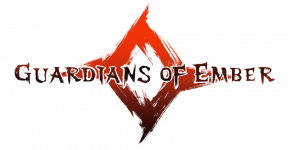


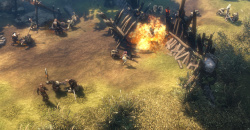

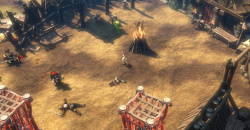
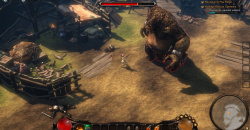
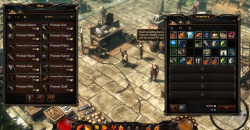
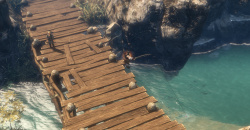

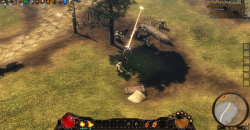
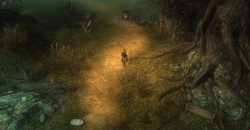
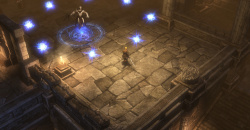
key pls
pil´çí
key please : )
key please : )
key pls
bu
key pls
beta key please
mm... looks interesting
key
key
beta key pls
key pls
key
awezom